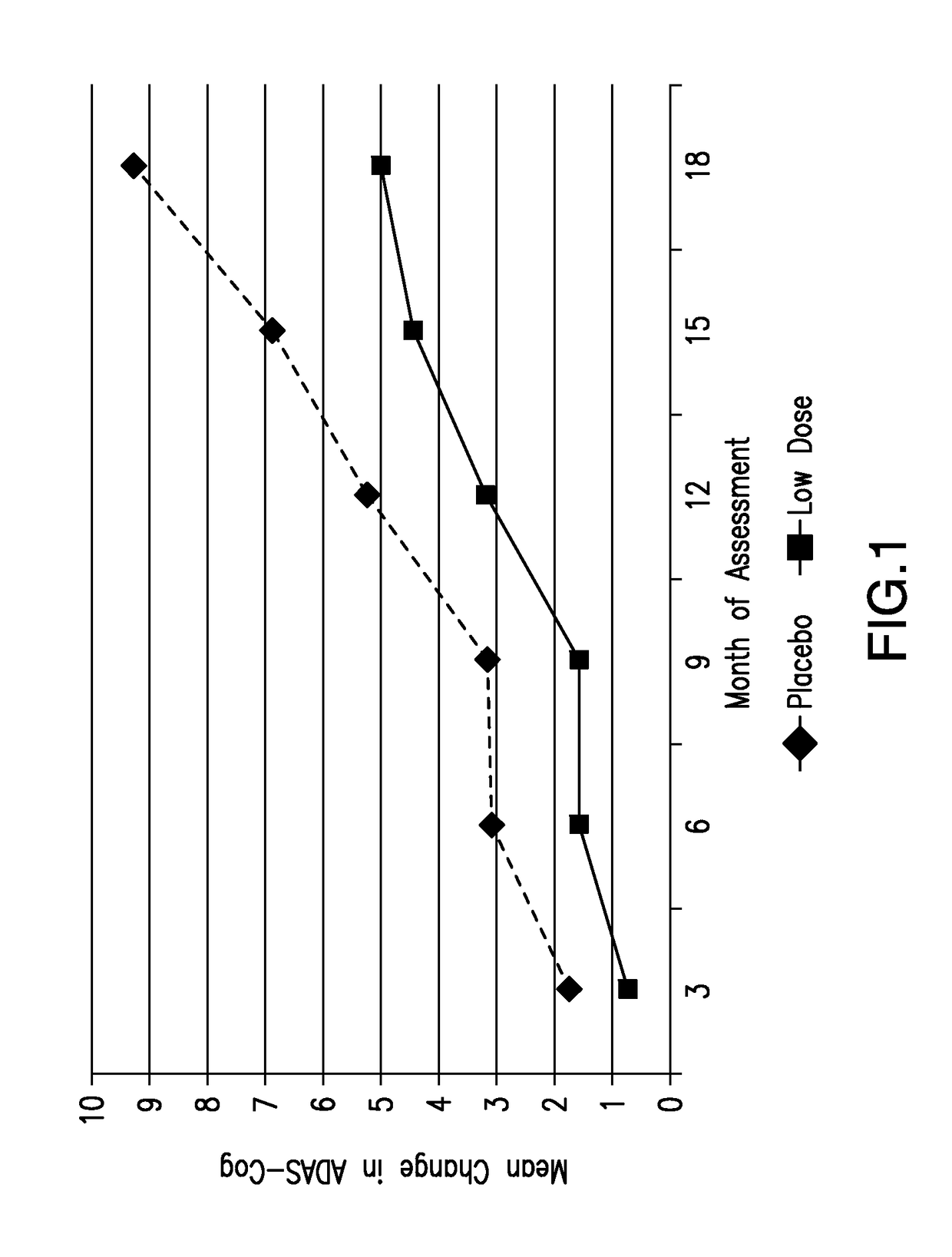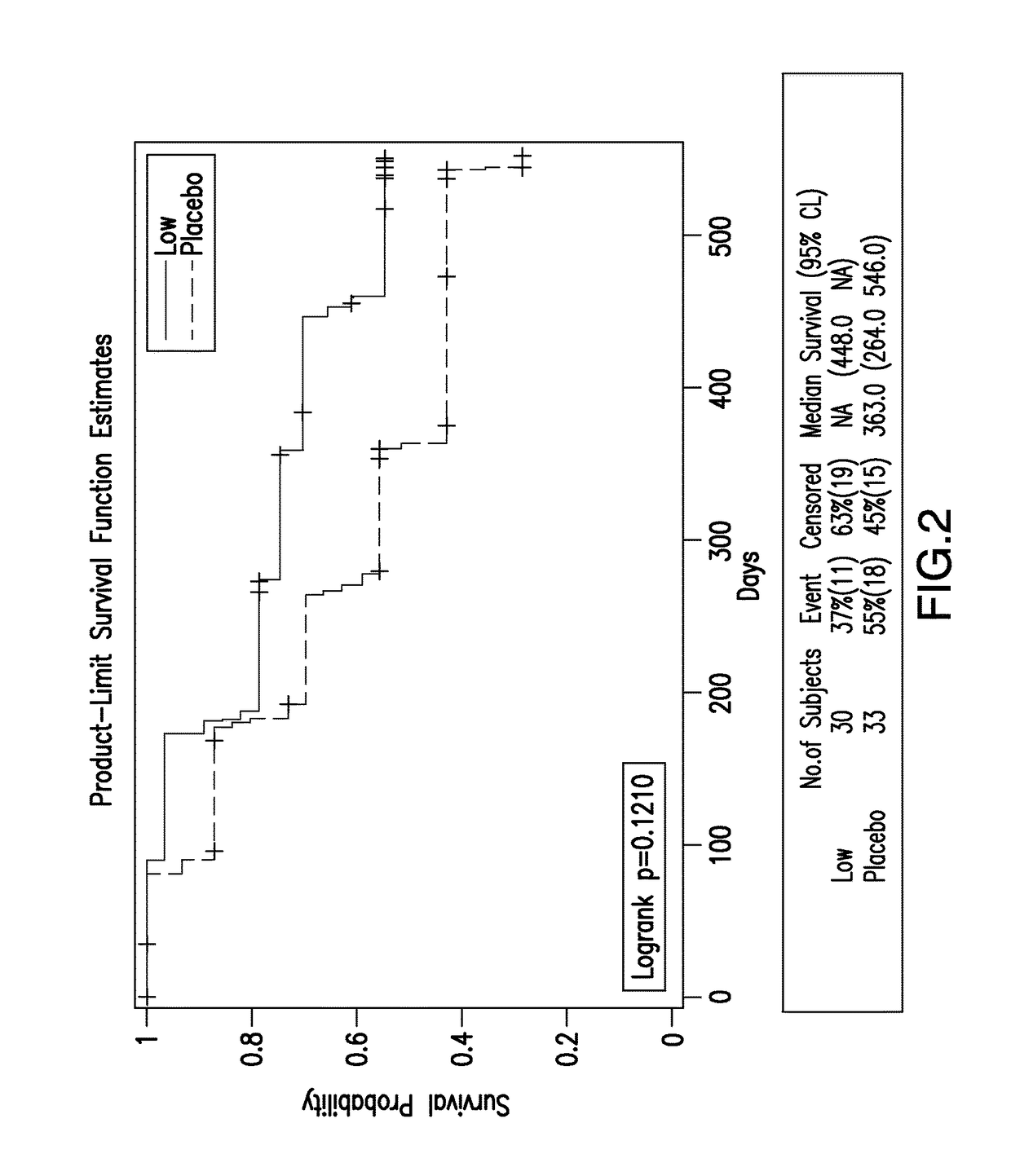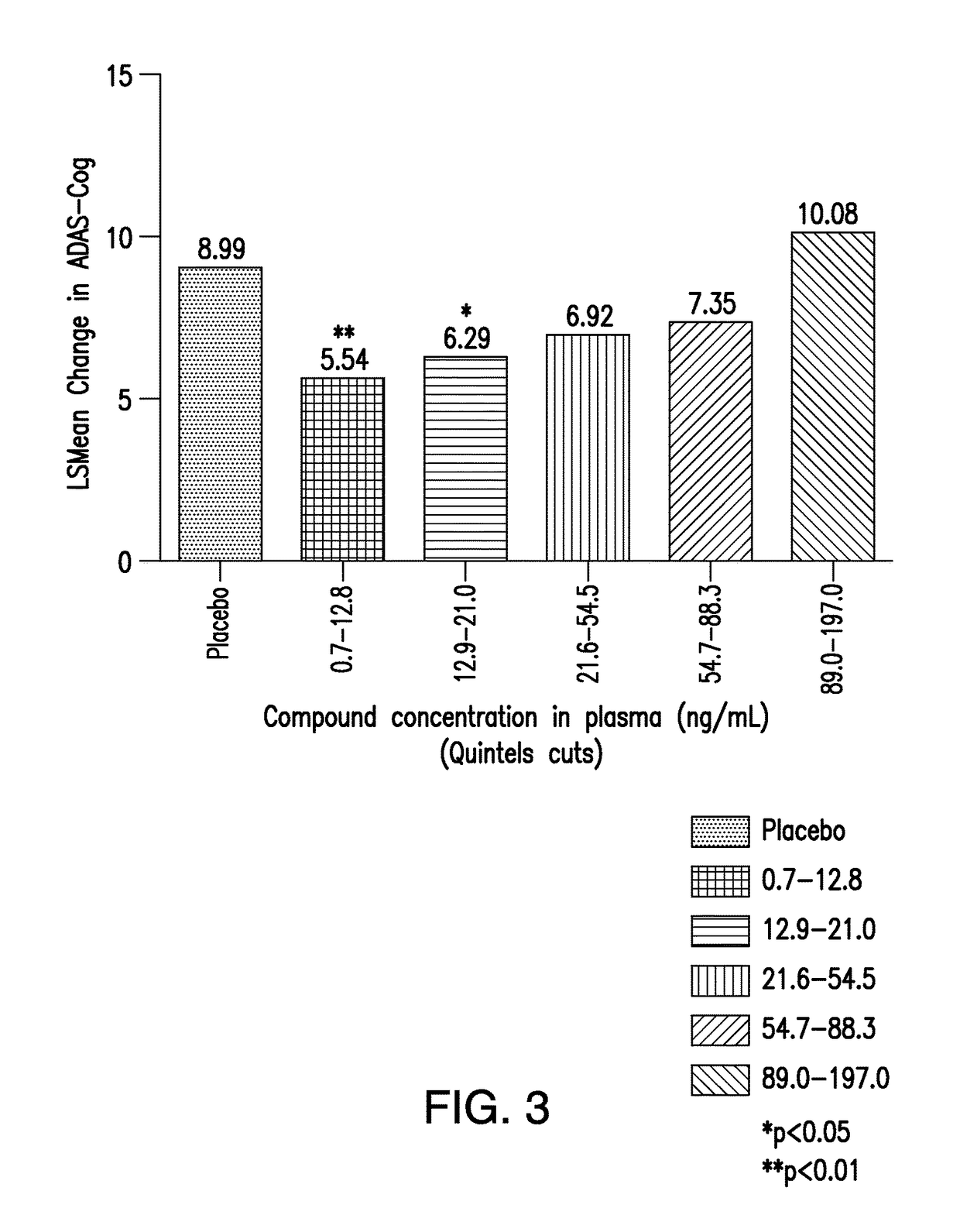Treatment of mild and moderate Alzheimer's disease
a treatment technology, applied in the field of mild and moderate alzheimer's disease, can solve the problems that endogenous clearance mechanisms are not able to function effectively at the site of age deposition, and achieve the effects of reducing the frequency of adverse events, and reducing sleep onset latency
- Summary
- Abstract
- Description
- Claims
- Application Information
AI Technical Summary
Benefits of technology
Problems solved by technology
Method used
Image
Examples
example 1
A Double-Blind, Placebo-Controlled, Randomized, Multicenter Study Evaluating the Efficacy and Safety of Eighteen Months of Treatment with COMPOUND I in Participants with Mild-to-Moderate Alzheimer's Disease
[0114]The study was designed with three arms: 20 mg / day after a loading dose of 60 mg / day for 6 days; 5 mg / day after a loading dose of 15 mg / day for 6 days, and placebo. The study randomized N=399 patients with mild-moderate Alzheimer's disease in balanced ratios (1:1:1). The 20-mg-dose group was terminated at an interim analysis. Subsequently, the study was terminated prematurely based on a futility analysis that was planned in the original protocol.
[0115]Statistical analysis of the study included analyses that were planned in the protocol and statistical analysis plan and also exploratory and investigative analyses. Subsequent to a patient's termination of study treatment, the patient was instructed to continue attending study visits, and data continued to be collected. Statisti...
example 2
Drug Effects were More Pronounced Among Patients Who Presented with Less Severity of Alzheimer's Disease than Those Who Presented with Greater Severity of Alzheimer's Disease, Based on the ADAS-Cog at Baseline
[0120]Entry into the study was based on the MMSE; there was no eligibility criterion based on the ADAS-cog. Post-hoc analysis examined characteristics of individuals who may have more pronounced benefit than others. Discriminant analysis suggested that some subgroups of patients may respond better than others to COMPOUND I.
[0121]An observation of the analysis revealed that patients in Study who presented with less severe Alzheimer's showed better delineation from placebo than those who had more severe disease at entry, based on the ADAS-cog.
[0122]FIG. 1 displays the change from baseline in ADAS-cog for an ADAS-cog subgroup of subjects presenting with ADAS-cog scores at baseline of less than or equal to 23.
[0123]The subjects presenting with mild dementia treated with placebo (da...
example 3
Drug Effects were More Pronounced Among Patients with Concentrations within Identified Ranges
[0126]Concentration levels were highly correlated with bodyweight and with BMI. The optimal dosing paradigm is concentration-driven.
[0127]Blood samples were taken at each study visit to measure trough concentrations of drug levels. Analysis of drug concentrations correlated with response as assessed by ADAS-cog. Statistical modeling to identify the concentration range that optimizes the efficacy of the compound was done using the trough concentrations and the change from baseline in ADAS-cog. Preliminary results showed a range of 7-20 ng / ml where COMPOUND I-treated subjects had maximal response (smallest changes from baseline in ADAS-cog) among all other groups in the study. Other analyses resulted in a range of 8 to 15 ng / ml. When analysis was expanded to include 4 supportive efficacy measures in addition to the ADAS-cog, (MMSE, ADL, CDR-sb, and NPI), the identified optimal range was 8-13 n...
PUM
| Property | Measurement | Unit |
|---|---|---|
| concentrations | aaaaa | aaaaa |
| weight | aaaaa | aaaaa |
| weight | aaaaa | aaaaa |
Abstract
Description
Claims
Application Information
 Login to View More
Login to View More - R&D
- Intellectual Property
- Life Sciences
- Materials
- Tech Scout
- Unparalleled Data Quality
- Higher Quality Content
- 60% Fewer Hallucinations
Browse by: Latest US Patents, China's latest patents, Technical Efficacy Thesaurus, Application Domain, Technology Topic, Popular Technical Reports.
© 2025 PatSnap. All rights reserved.Legal|Privacy policy|Modern Slavery Act Transparency Statement|Sitemap|About US| Contact US: help@patsnap.com



